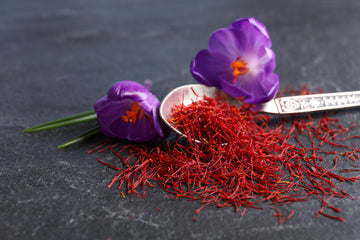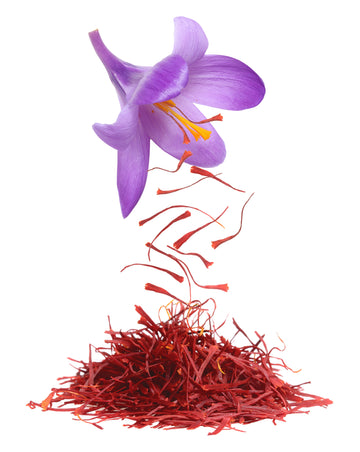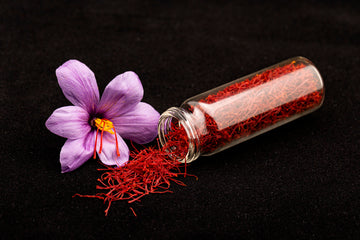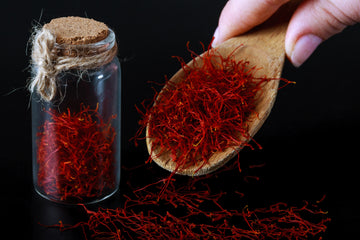
Saffron's Antioxidant Properties: Protecting Cells and Boosting Overall Health
In a world filled with fast-paced lifestyles and processed foods, the quest for natural remedies to support our health has become more important than ever. Enter saffron, a spice that not only dazzles our taste buds but also holds a treasure trove of antioxidant properties. From protecting our cells against damage to boosting overall well-being, saffron has emerged as a superstar ingredient in the realm of natural health. Join us on a journey to uncover the vibrant and powerful world of saffron's antioxidant effects.
Understanding Antioxidants
Before diving into saffron's antioxidant properties, let's first understand what antioxidants are and why they are crucial for our health. Antioxidants are compounds that neutralize harmful molecules called free radicals, which are byproducts of various metabolic processes in our bodies.
Free radicals can damage cells and contribute to the development of chronic diseases, including cancer, heart disease, and neurodegenerative disorders. Antioxidants play a vital role in preventing or slowing down this damage, offering protection to our cells.
Saffron: A Powerful Antioxidant
Saffron is derived from the flower Crocus sativus and has been used for centuries in traditional medicine. This precious spice contains several bioactive compounds, including crocin, crocetin, safranal, and kaempferol, which are responsible for its vibrant color and therapeutic properties. [1] These compounds act as potent antioxidants, helping to combat oxidative stress and promote overall well-being.
Cellular Protection
Oxidative stress occurs when there is an imbalance between the production of free radicals and the body's ability to neutralize them with antioxidants. This imbalance can lead to cellular damage and contribute to the development of chronic diseases. Saffron's antioxidant properties can help mitigate oxidative stress by neutralizing free radicals and protecting cells from damage. [2] By reducing oxidative stress, saffron supports cellular health and helps maintain the proper functioning of organs and tissues throughout the body.
Boosting Overall Health
Beyond cellular protection, saffron's antioxidant properties offer a range of health benefits that positively impact our well-being:
Anti-Inflammatory Effects
Chronic inflammation is a common underlying factor in many diseases. Saffron's antioxidants help reduce inflammation by suppressing inflammatory markers and inhibiting the production of pro-inflammatory molecules. [3] This can alleviate symptoms of conditions such as arthritis, asthma, and digestive disorders.
Mood Enhancement
Saffron has long been used in traditional medicine for its mood-enhancing properties. The antioxidants in saffron help improve mood and alleviate symptoms of depression and anxiety by modulating neurotransmitter levels in the brain.
Eye Health
Saffron's antioxidant compounds, particularly crocin, have been found to have protective effects on retinal cells, which are crucial for vision. [4] These antioxidants may help prevent age-related macular degeneration and cataracts, two common eye conditions.
Heart Health
Oxidative stress and inflammation are significant contributors to cardiovascular disease. Saffron's antioxidants help reduce cholesterol levels, lower blood pressure, and prevent the formation of plaque in arteries, promoting a healthy heart.
Incorporating Saffron into Your Diet
To reap the antioxidant benefits of saffron, it can be incorporated into your diet in various ways:
- Infuse saffron threads in hot water or milk to create a fragrant and antioxidant-rich tea.
- Add a pinch of saffron to rice dishes, soups, stews, or sauces for both flavor and health benefits.
- Use saffron as a natural food coloring agent in baked goods or desserts.
Conclusion
Saffron's antioxidant properties make it a valuable addition to a healthy diet. By neutralizing free radicals and reducing oxidative stress, saffron helps protect cells, supports overall health, and may even help prevent chronic diseases. However, it's important to note that saffron should be consumed in moderation and as part of a balanced diet. If you have any existing health conditions or are taking medications, it's advisable to consult with a healthcare professional before incorporating saffron into your routine. [5] Embrace the power of saffron and unlock its potential to enhance your well-being.
Experience the finest quality saffron at SafiSaffron - your ultimate destination to buy saffron that delights the senses and nourishes the body.
References
- Zahra Maqbool, Muhammad Sajid Arshad, Anwar Ali, Afifa Aziz, Waseem Khalid, Muhammad Faizan Afzal, Sneh Punia Bangar, Mohamed Addi, Christophe Hano, and Jose Manuel Lorenzo. 2022 Sep 22. Potential Role of Phytochemical Extract from Saffron in Development of Functional Foods and Protection of Brain-Related Disorders. https://www.ncbi.nlm.nih.gov/pmc/articles/PMC9526642/#:~:text=Saffron%20is%20a%20traditional%20medicinal,picrocrocin%2C%20kaempferol%2C%20and%20flavonoid.
- Lobo, V., Patil, A., Phatak, A., & Chandra, N. (2010). Free radicals, antioxidants and functional foods: Impact on human health. Pharmacognosy reviews, 4(8), 118. https://www.ncbi.nlm.nih.gov/pmc/articles/PMC3249911/
- Bastani, S., Vahedian, V., Rashidi, M., Mir, A., Mirzaei, S., Alipourfard, I., ... & Akbarzadeh, M. (2022). An evaluation on potential anti-oxidant and anti-inflammatory effects of Crocin. Biomedicine & Pharmacotherapy, 153, 113297. https://www.sciencedirect.com/science/article/pii/S0753332222006862
- Jose A. Fernández-Albarral, Rosa de Hoz, Ana I. Ramírez, Inés López-Cuenca, Elena Salobrar-García, María D. Pinazo-Durán, José M. Ramírez, and Juan J. Salazar. 2020 Jan 28. Beneficial effects of saffron (Crocus sativus L.) in ocular pathologies, particularly neurodegenerative retinal diseases. https://www.ncbi.nlm.nih.gov/pmc/articles/PMC7059587/
- Engler, R. J., With, C. M., Gregory, P. J., & Jellin, J. M. (2009). Complementary and alternative medicine for the allergist-immunologist: where do I start?. Journal of allergy and clinical immunology, 123(2), 309-316. https://www.sciencedirect.com/science/article/abs/pii/S0091674909000049





